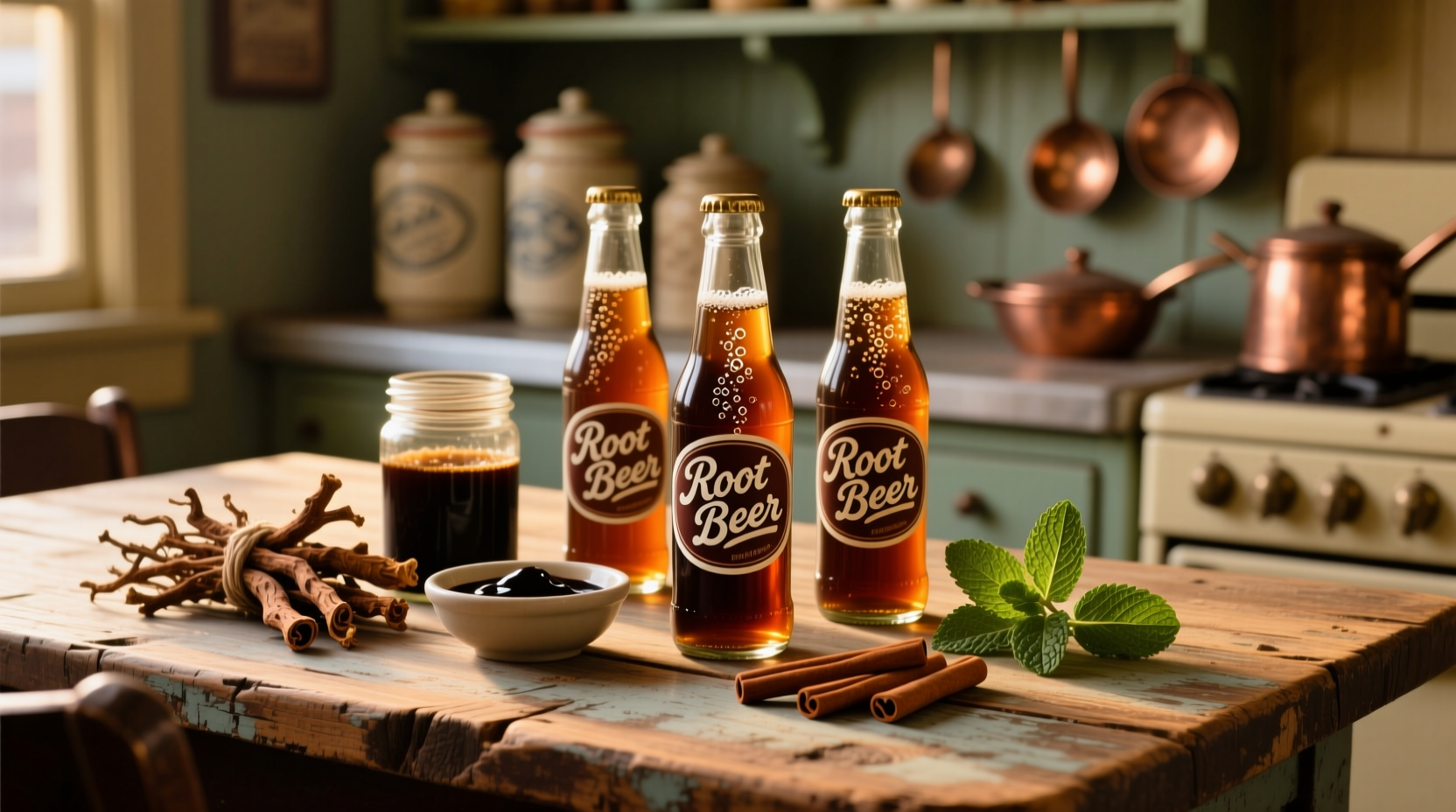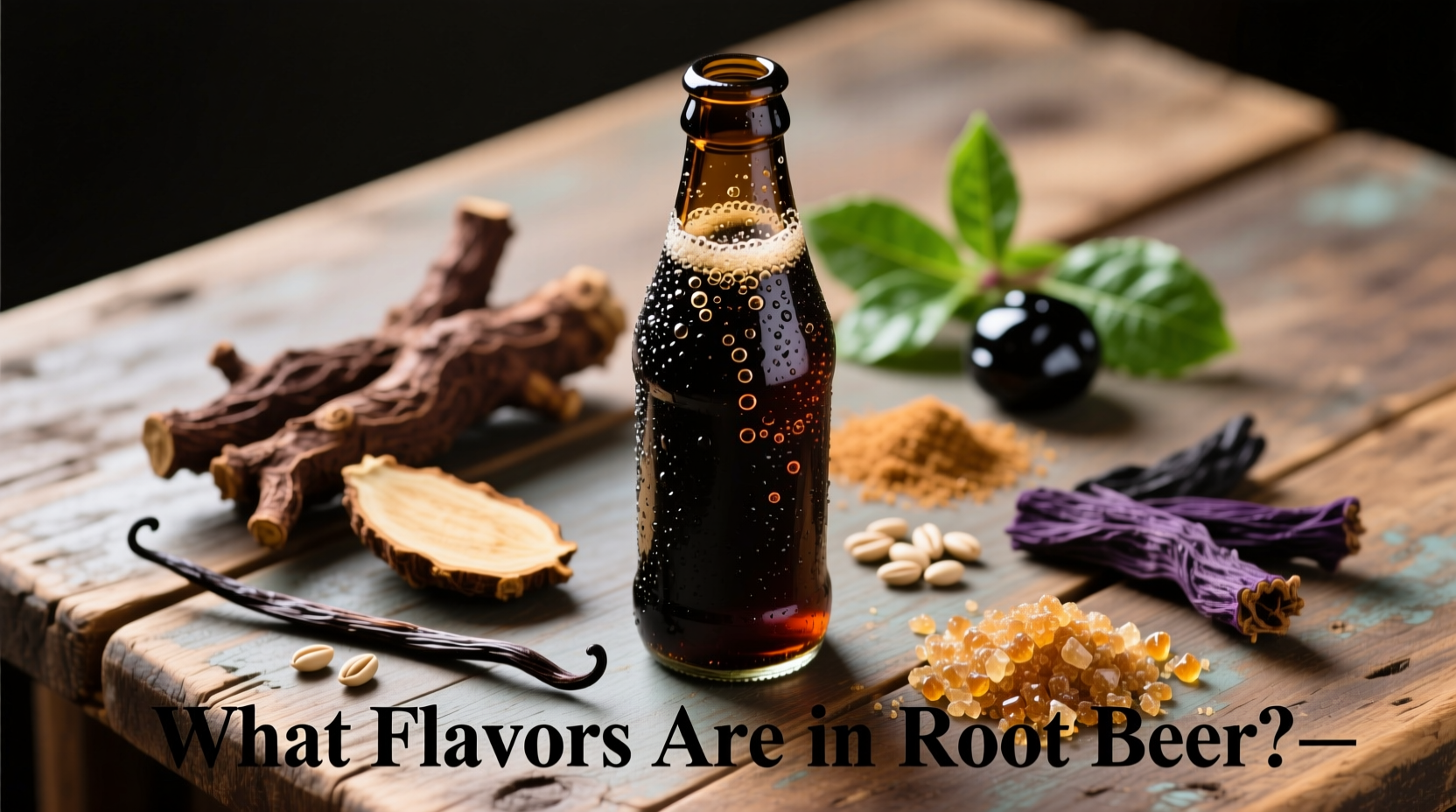Discover exactly what creates that nostalgic, creamy soda taste you love. This guide breaks down the specific botanical ingredients and flavor compounds that give root beer its signature profile, explains why traditional recipes changed in the 1960s, and helps you identify authentic flavor notes in today's commercial brands.
The Historical Evolution of Root Beer Flavors
Root beer originated as a medicinal "small beer" in 19th century America, brewed from actual roots and herbs. The original flavor profile was far more complex than today's commercial versions. According to food historians at the Smithsonian Center for Folklife and Cultural Heritage, early recipes often contained 8-15 different botanicals carefully balanced for both flavor and purported health benefits.
Root Beer Flavor Timeline
- Pre-1800s: Native American tribes used sassafras root in medicinal teas, introducing European settlers to its distinctive aroma
- 1840s: Charles Hires develops the first commercial root beer extract, featuring sassafras as the primary ingredient
- 1960: FDA bans sassafras oil due to safrole content (linked to cancer in rodent studies)
- 1970s-Present: Commercial brands shift to artificial flavors or safrole-free sassafras extract
Breaking Down Root Beer's Core Flavor Components
Modern root beer achieves its characteristic taste through four distinct flavor layers working in harmony. Understanding these components helps you appreciate why certain brands taste more "authentic" than others.
Primary Flavor Base: The Root Elements
The foundation of root beer flavor comes from:
- Sassafras/Sarsaparilla: Traditionally the dominant flavor, now typically replaced by safrole-free extracts or sarsaparilla root which provides similar earthy notes without safety concerns
- Wintergreen: Contributes that distinctive minty-cold sensation (methyl salicylate compound)
- Birch Bark: Adds woody, slightly sweet undertones in many traditional recipes
Secondary Sweetness and Complexity
These ingredients create root beer's recognizable sweetness and depth:
- Licorice Root: Not the candy flavor, but a subtle earthy sweetness (different from anise)
- Vanilla: Provides creamy richness that balances the herbal notes
- Spices: Typically includes anise (for licorice-like notes), cassia (similar to cinnamon), and clove
| Flavor Component | Traditional Ingredient | Modern Substitute | Flavor Contribution |
|---|---|---|---|
| Primary Base | Sassafras root bark | Safrole-free extract or sarsaparilla | Earthy, woody foundation |
| Cooling Element | Wintergreen leaves | Synthetic methyl salicylate | Minty freshness |
| Sweet Complexity | Licorice root | Anise or star anise | Subtle sweetness with herbal notes |
| Warm Spices | Cinnamon, clove, nutmeg | Natural spice extracts | Warm, rounded finish |
Why Modern Root Beer Tastes Different Than Vintage Recipes
The most significant change came in 1960 when the FDA banned sassafras oil containing safrole after studies showed it caused liver cancer in laboratory rats at extremely high doses. According to the FDA's guidelines on natural flavorings, modern root beer must use either safrole-free sassafras extract (with safrole removed) or alternative botanicals.
This regulatory change created two distinct flavor profiles in the market:
- Traditional craft root beers: Use safrole-free sassafras extract plus sarsaparilla for a more complex, herbal profile
- Mass-market brands: Rely on artificial flavorings that emphasize wintergreen and vanilla notes for broader appeal

How to Taste the Different Flavor Notes in Root Beer
Most people drink root beer without noticing its complex flavor layers. Try this professional tasting technique to identify the individual components:
- Chill properly: Root beer shows its best flavor between 38-42°F (3-6°C)
- First aroma: Before drinking, note the initial scent - wintergreen should be prominent
- Initial taste: The first sensation should be sweet vanilla with underlying spice notes
- Middle palate: As it warms in your mouth, look for earthy sarsaparilla notes
- Finish: Quality root beer leaves a clean, slightly spicy aftertaste without chemical bitterness
Commercial brands like A&W and Barq's emphasize wintergreen and vanilla for immediate sweetness, while craft brands like Sprecher and Virgil's use more complex spice blends that reveal additional notes as the beverage warms.
What to Look for in Quality Root Beer
Not all root beers deliver authentic flavor complexity. When selecting a quality product, check for these indicators:
- Ingredients listing actual botanicals (sarsaparilla, wintergreen, licorice root) rather than just "natural flavors"
- Balanced sweetness - should not overpower the herbal notes
- Creamy mouthfeel from proper carbonation levels (typically 2.5-3.0 volumes of CO2)
- No chemical aftertaste, which indicates poor quality artificial flavorings
Understanding what flavors are in root beer helps you appreciate why certain brands stand out. The best examples balance all flavor components without letting any single note dominate - creating that nostalgic, complex profile we recognize as "root beer" flavor.











 浙公网安备
33010002000092号
浙公网安备
33010002000092号 浙B2-20120091-4
浙B2-20120091-4